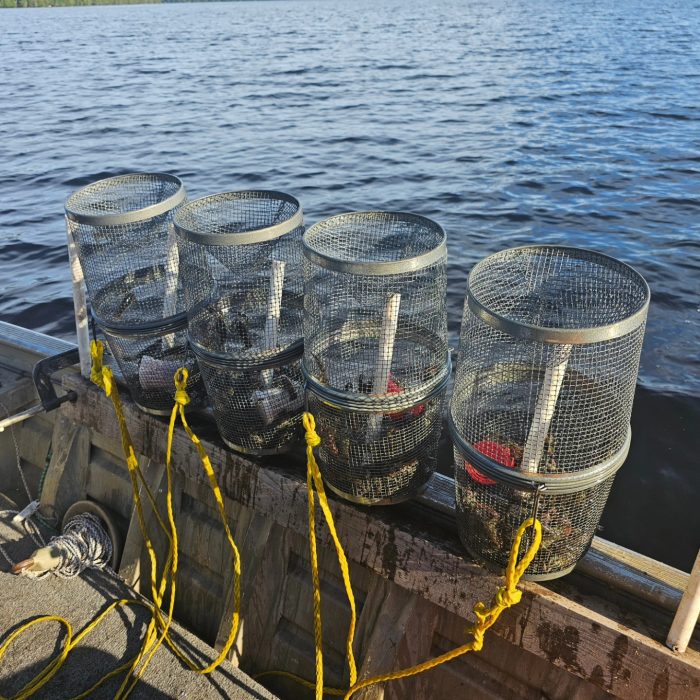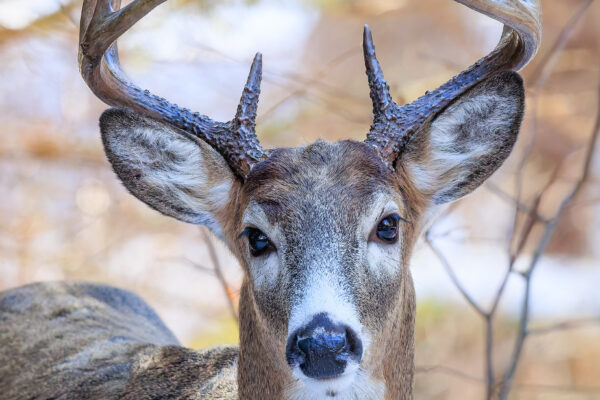Crawdaddies MN finish season with 40,000 invasive rusty crayfish caught in Cook County lakes
It has been another busy summer of catching invasive rusty crayfish in Cook County lakes for Yusef Orest and Garrett Lima, owners of Crawdaddies MN.
“We made quite the dent in the rusty population,” said Orest.
This season, Crawdaddies caught 40,000 rusty crayfish in Cook County lakes.
In Caribou Lake, Orest said they caught over 1100 pounds, all of which have gone to market to be sold locally at Cook County businesses. “Most of them get eaten in either the Angry Trout or The Fisherman’s Daughter or for some local events that we support.”
Rusty crayfish are an aquatic species transported and released to northern Minnesota from its native region of the Ohio River Basin. According to the Minnesota Department of Natural Resources, the invasive crustacean was likely introduced to northern Minnesota through improper disposal of live bait or aquarium releases.
“They cause a lot of problems to our native crayfish,” Amanda Weberg, the aquatic invasive species program supervisor, told WTIP in an April interview. “They’re more aggressive, so they will outcompete for habitat.”
In addition to aggressive tendencies that displace native crayfish, the invasive rusty crayfish destroys aquatic plant beds, consumes fish eggs, and breeds with native crayfish, creating a decline in native populations.
Crawdaddies MN uses modified minnow traps with long strings attached to a buoy to catch the invasive species. Orest and Lima first began their operation on Pike Lake and expanded this summer to Caribou Lake. Orest said another lake nearby, Bigsby Lake, also has a healthy population of rusty crayfish.
“They are pretty populous in those three bodies of water,” said Orest. “But I have heard that they’re actually in a few other bodies of water.”
He said he had heard reports that rusty crayfish may be in lakes farther up the Gunflint Trail, including Gull Lake, Hungry Jack Lake, West Bearskin, Clearwater Lake, Seagull Lake, Saganaga Lake, and even the Pigeon River.
Orest said they catch native crayfish species in their traps but are safely released back into the lake.
“When we run these long strings of traps, we do get both rusty’s and the natives, usually the Northern Water crayfish,” he said. Orest said each species has identifiable marks that make it relatively easy to distinguish between a native species and an invasive rusty crayfish. “The rusty crayfish, their hallmark is, of course, the rusty spot on the side of their abdomen on both sides, that really helps you identify them.”
Earlier this spring, the Cook County Soil and Water Conservation District (SWCD), which partners with Crawdaddies MN, launched a new citizen science initiative to monitor rusty crayfish within the Boundary Waters Canoe Area Wilderness. The initiative will help the SWCD to better understand where rusty crayfish populations are within the Boundary Waters.
WTIP spoke with Yusef Orest, co-owner of Crawdaddies MN, as the business wraps up its summer season this week. The audio from the interview is below.















